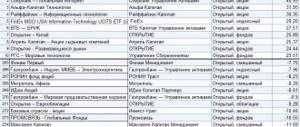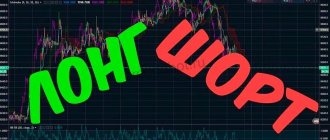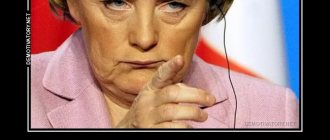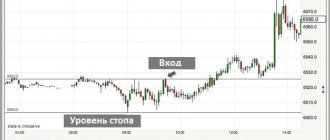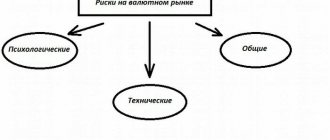Speculation or investment?
The foreign exchange and stock markets are similar in many ways, but there are also key differences. In particular, this is the approach itself - investment or speculative. And if speculative traders predominate in the foreign exchange market, then there are more investors in the stock market.
Speculating on the stock market involves high risk and requires special skills and preparation. Even the most experienced stock traders do not always succeed in making money on the stock market. For example, if you look at the statistics of the “Best Private Investor” competition, which is held annually on the Moscow Exchange, then in 2019 56% of traders were left without profit, and only 7% of participants managed to earn more than 100 thousand rubles. In 2021, the LCI competition ended for 82% of traders without a profit and with a loss.
For this reason, we will consider income from investments in the securities market, excluding the speculative part.
What is EPS and why is it needed?
How to find out the EPS value? You need to divide the company's net profit, minus dividends paid, by the number of shares outstanding. Usually the coefficient is calculated for the calendar year.
Example . Company A earned $1 million last year. Shares outstanding: 50,000. No dividends were paid.
We get EPS = 1,000,000 / 50,000 = $20.
Why are dividends deducted from profits?
It would seem more correct to include the amount of dividends received in EPS. This is also profit.
The company has 3 ways to direct its net profit.
- Pay off debts (partially or completely). As a result, debt servicing costs will be lower next year. This will have a positive impact on your net profit. And to increase EPS.
- Invest in development. This will increase capital, which can generate more profits. And again EPS growth.
- Pay dividends. In this case, the shareholders will be happy. Someone will buy themselves a can of Baltika Nine (possibly more than one). And someone has a new car. This will be considered a reduction in capital for the company. If all the profits are given to divas, then there will be no more capital. Debts are not decreasing. Why then should the company grow in the future? And our earnings per share ratio.
Unlike the P/E (price/earnings) multiple, which is relative, the earnings per share (EPS) indicator shows an absolute value. That is, exactly how many rubles or dollars the company earns per share.
Investments in shares and OFZ
A bank deposit is, in fact, the simplest way to invest money. However, this method is completely unsuitable for increasing them.
For example, at the end of May 2021, the average maximum rate on ruble deposits of the top 10 Russian banks in this market, according to the Central Bank of the Russian Federation, was 5.039. Moreover, at the June meeting, the Bank of Russia reduced the key rate to 4.5%, which means that in June the average rate on ruble deposits was at the level of 4.5-4.7%.
An alternative to a bank deposit is the purchase of federal loan bonds OFZ . The issuer of these bonds is the state, which guarantees their highest reliability, and the yield on them exceeds the yield on deposits by 2-3 percentage points
Exchange-traded bonds of large banks and companies , are also highly popular among investors . For example, the rate for a ruble deposit in Sberbank at the time of writing is less than 4% per annum. In turn, the exchange-traded bond of the same Sberbank RU000A100758 has a yield of 5.3% per annum.
The third investment option is stocks . The profitability of this asset is higher than the previous two, but the risks are also higher.
An investor who bought shares has the opportunity to profit from the growth in the value of the securities themselves and from the payment of dividends. For example, between 2001 and 2021, Sberbank shares rose in price by 65%, not taking into account dividends.
It is worth noting that not all stocks grow at such a pace - some securities may remain in a narrow price range for years. Also, do not forget that the rule of all financial markets applies to the stock market - profitability in the past is not a guarantee of profit in the future. Therefore, you should approach the selection of stocks to purchase with maximum responsibility.
Company analysis
Let's compare the EPS ratios of Sberbank and Norilsk Nickel.
- Sber's EPS for last year was 38.4 rubles per share.
- Norilsk Nickel's EPS is 1,037 rubles.
Earnings per share of Sber are tens of times lower.
Does this mean that it is more profitable to take Norilsk Nickel into your portfolio?
It means absolutely nothing. Here we have not taken into account the market value of the shares. And it also differs tenfold.
For example, EPS values for Russian companies.
Can this information help you in any way when choosing securities? Probably not.
Then why do we need this seemingly useless coefficient? There's no use for him.
You cannot compare performance between companies. Select stocks by value too. A high EPS multiple doesn't mean anything. There are companies with a very small EPS value, but in relation to the same penny price of their securities, it seems there will be a good profit.
Corporate Investments
You can study long and hard the options for buying bonds and shares, but if you don’t have time for this, then the process can be somewhat simplified by purchasing mutual fund units or ETF shares . In this way, you can buy not an individual share of a company, but an entire investment portfolio formed in a certain way.
For example, on the Moscow Exchange you can buy shares of the FXRL ETF, which is formed on the basis of the RTS index, or a share of the exchange-traded mutual fund VTBB, which includes securities from the Moscow Exchange corporate bond index.
Each exchange-traded investment fund issues its shares or units, which are available to private investors at a price of 1,000 rubles.
With the help of mutual funds and ETFs, you can diversify the risks of your investments, and they save a lot of time.
How to enable margin trading in your personal account?
To start trading, you need to open an individual investment or brokerage account with Tinkoff Investments. Only the “Trader” and “Premium” tariff plans are suitable for this. The Investor tariff does not provide for such transactions.
To enable margin trading, follow these steps:
- Log into your personal account on the tinkoff website by entering your phone number, SMS code and password.
- Go to the “Portfolio” tab - More -> About the account.
- Scroll down the page and find the line “Margin Trading”, drag the slider to the right to activate the service.
You can also connect margin trading directly from the Tinkoff Investments web terminal.
- To start trading, open your personal account on the website tinkoff.ru, go to the web terminal.
- In the upper right corner, click on the “Add widget” icon (as shown in the screenshot).
- Select the Margin Trading widget.
- Move the slider to the active position.
The amount of leverage will be calculated separately for each security.
How much can a novice investor earn on the stock exchange?
You shouldn’t chase some sky-high profitability indicators and rush to get rich by the coming Monday. The return on investment can already be considered good if it exceeds the interest on a bank deposit by 2-3%.
The optimal option for profitability is considered to be profit growth that corresponds to the average market rate. For the Russian stock market, this is approximately 15% per year (average return on the Moscow Exchange index since 2001). In addition, Warren Buffett, a legend in the investment world, is confident in the correctness of this approach, and his experience is worth trusting. And you shouldn’t forget about tax benefits, and this is a significant addition to profits.
Diluted EPS
There are a number of instruments (convertible bonds, options and warrants) that can be converted into shares (called potential common shares).
As a result, this leads to capital dilution due to an increase in the number of shares and a change in earnings per share. The calculation formula is as follows:
Diluted EPS is used for companies with complex capital structures.
If the conversion of potential common shares results in increased earnings, they are considered anti-dilutive and are excluded from the calculation.
Is it possible to get rich quick on the stock market?
The answer to this question is yes. As well as the question - is it possible to win a million dollars in the lottery? Of course, from time to time, some investor or trader manages to hit a huge jackpot on the stock market, but here it is solely a matter of a successful coincidence of many factors, and not of knowledge of the market.
For example, over the 13 years of holding the “Best Private Investor” competitions, 42 thousand people took part in them. And only 44 traders out of 42 thousand managed to make a profit of about 1000%, but were unable to repeat their record in the future.
Tariffs and commissions for using leverage
Opening a short position involves working with the broker's credit funds, i.e. with a shoulder. This is accompanied by a broker's commission for using borrowed funds. It is charged for each day the loan is provided. Ideally, when working with a short position, it must be closed on the same day, then the broker will not write off the reward. Accordingly, the longer you do not close it, the more you will lose on commission. How much does it cost to use credit money at Tinkoff? The exact terms of the commission depend on the specific broker and are specified in the tariff plans. For example, the cost of using leverage at Tinkoff:
| Amount of uncovered positions | Leverage fee per day |
| Up to 50,000 ₽ | 25 ₽ |
| Up to 100,000 ₽ | 45 ₽ |
| Up to 200,000 ₽ | 85 ₽ |
| Up to 300,000 ₽ | 115 ₽ |
| Up to 500,000 ₽ | 185 ₽ |
| Up to 1 million rubles. | 365 ₽ |
| Up to 2 million rubles. | 700 ₽ |
| Up to 5 million rubles. | 1700 ₽ |
| More than 5 million rubles. | 0.033% of the amount of uncovered positions |
The commission for transactions using leverage is in addition to the broker's standard commission for the transaction. Therefore, with such an operation, the trader pays twice.
How to open a short position?
To open a short, you must use the following step-by-step instructions:
1. Open the Tinkoff Investments application.
2. Select the desired asset.
3. Click “sell”.
After this, in your personal account you will have a position with a minus sign. This means that you sold the securities that the broker gave you on credit.
If you use a web terminal for trading, then the sequence of your actions will look like this:
1. Open the “Request” option.
2. Click “sell”. The red button is used for this.
After this, open the “Margin Trading” or “Portfolio” tab and you will see that this transaction is reflected with a minus sign.
Approximate profit/risk ratio
To make it easier to understand the real situation with market risks, it is worth referring to a simple rule: a moderately risky investment strategy gives a profit/loss ratio of 1/0.5.
Those. if you want to receive 100% per annum when investing money for about a year, which in itself is quite ambitious, then you should count on the probable risk of eventually losing 50% of your funds instead of earnings.
Yes, by investing $100 in such a project, you risk losing about $50 instead of getting $200. And this is provided that the percentage of possible losses is controlled by you or agreed upon with the management company.
Understanding this fact allows you to evaluate your desires and moods. It may be more interesting for you to receive 30% profit with 15% risk, or invest not all of your funds in particularly risky assets. Or perhaps, on the contrary, you are ready to risk everything and get greater profits.
What do you need?
To short a stock we need to borrow from a brokerage company. Let’s imagine: an investor borrows shares from a company and immediately sells them for 200 rubles, the price falls, the shares have fallen in price to 150 rubles. At this level, the investor buys shares for 150 rubles and returns the debt to the broker. We receive 50 rubles, but from this we need to pay the company for intermediary operations.
Why are short positions called that? It's simple. As a rule, it is generally accepted that they are shorter in duration than long-term ones, because declines in the market are sharper than increases. And more often than not, short trades close faster. This option is considered a risky trading method, but it should also be considered.
Technically, opening a short is not difficult, just click on sell if there are no shares on your balance sheet. You set the cost, the number of lots you plan to sell, set stops, and confirm the operation. Then a position with a “−” sign appears on the account. For example, if you sell 10 lots, the instrument will display -10. In parallel with this, an additional amount received from the sale of securities appears on the balance sheet. Please note that you do not have the right to dispose of these funds; they are virtual. The brokerage company blocks them. So that the investor does not have the opportunity to withdraw money from the sale of assets that do not belong to him. The money is blocked until the shares taken are returned to the company.
When the price of the selected stock has decreased, the position is closed. You have to purchase an identical number of shares, which are automatically used to pay off the debt to the company.
It is important to understand that you will not be able to open short positions if you have 0 rubles on your balance. Collateral is required, the amount of money in the account or the amount of liquid securities in the broker's account. This is a deposit.
The brokerage company often allows you to open a position for an amount exceeding the deposit. You can do this with your shoulder. We are talking about margin trading.
Functions of the stock market
If you plan to make money on the financial market using a Forex broker or any other, then you should first familiarize yourself with the basic functions of the stock market and understand how it works.
It has a large number of functions, among which stand out:
- redistributive
- deficit financing
- centralization of capital
- accounting
- stimulation
Raising funds
To develop financing of their activities, many organizations and states issue securities. During the sale of shares, bonds, and futures, funds are raised into the budget. If we are talking about government securities, then funds are raised into the state treasury.
Capital distribution
Stock market players are participants with different financial capabilities. The financial market offers them the opportunity to use a wide range of capital levels to participate in transactions. When they occur, a redistribution of capital occurs.
The following may take part in transactions:
- state
- state companies
- private firms
- private investors
Thanks to their active participation, financial flows are generated through trading on a platform such as a stock exchange in stocks, bonds or futures, which are subsequently redistributed.
Regulatory function
Futures and other securities have their own specific value. It is formed depending on how in demand one or another of them is at the moment. The market is also largely considered active due to this. After all, capitalization is determined thanks to the transactions made.
<
Dividend cut-off
Many people know that after the dividend cutoff, company shares are guaranteed to fall. Perhaps it makes sense to work short before the cutoff and make a profit? When a short position is already activated during the cut-off period, the person who allowed overnight and whose shares you are using will not receive dividends. And therefore, the broker will force you to pay dividends to the person and also pay 13% tax. This is if the company allows shorting before the cutoff. In reality, most firms forcefully close the position. Don't think that you can outwit the system.
Short positions are available to anyone if they have the required amount and securities on deposit. Whether you need to proceed with this trading option, taking into account all the risks and features, you should think carefully before opening a position.
Features of tax obligations
Please note that the tax is not charged on paper profits, but on those that were received from closing the transaction. If a client holds a security, and income is displayed in the trading terminal or personal account, but it is not recorded, the transaction is open - this profit is not paper, therefore it is not taxed.
When is the tax removed? There are three options:
- at the moment when the investor withdraws money;
- when closing an account;
- At the end of the year, the broker sums up the investor’s results and the payment is made.
